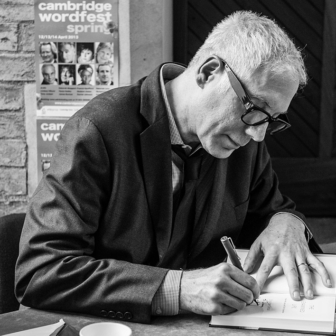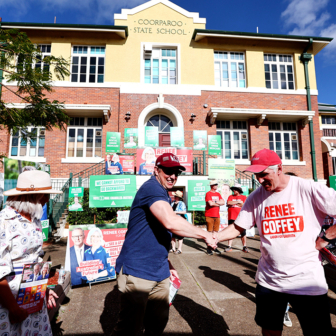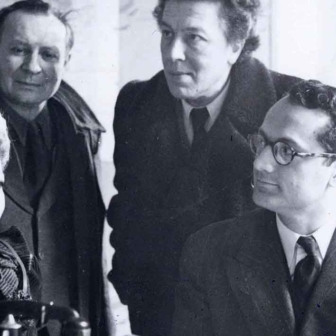Perhaps the most famous scholarly discussion of the purpose, value and mission of universities is Cardinal John Henry Newman’s collected lectures, published from 1852 as The Idea of the University. Newman called for a Catholic university to be established in Dublin not in order to produce Catholic “gentlemen,” nor for the cultivation of knowledge, skills or talent for their own sake, but as a means of according young Catholic men the life-enriching cultivation of intellect and spirit opened up by a university education.
For Newman, this cultivation was not about social mobility, though it might well encourage it, but about the life-altering nature of contact with “universal knowledge.” But his impassioned advocacy for the university was undergirded by a subtle sense of threat, a fear that the university had lost much of its authority to the fast-paced and glittering world of journalism.
A century later, and concern had grown, in some eyes, to a “crisis.” In The Crisis in the University, published in 1949, another theologian, former Manchester University vice-chancellor Walter Moberly, lamented the moral decline of universities as institutions for producing cultivated men and women. He noted that the university had ceased to fully believe in its own sacred task and was uncertain what it stood for. Later, in 1996, Bill Readings, in one of the most incisive of the critiques that were to become a staple of late-twentieth-century scholarly analysis of the university, declared the university to be “in ruins.”
Michael Wesley does not, as far as I can recall, use the word “crisis” in his latest book, Mind of the Nation: Universities in Australian Life. In fact, he opens his readable and insightful account with the claim that universities entered the third decade of this century “secure and confident.” Having worked as an academic in Australian universities for more than three decades from the early nineties, I baulked at this. Many — if not most — of the securely employed academics I know are ground down, quietly despairing, and looking for a Plan B.
But I soon realised that in Wesley’s book, as in higher education policy and politics more broadly, “universities” does not mean “academics.” This ought not to have surprised me. After all, Étienne Pasquier’s venerable idea of the university as “built of men” has been extinguished, having taken its last breaths over recent decades as the highest levels of university governance were slowly but surely removed from the hands of “ordinary” academics and a managerial pathway established for those with that type of ambition. So while Wesley’s story of the sudden unexpected plummet in universities’ fortunes with the onset of Covid-19 speaks accurately to the shock experienced across the sector, including by students, many academics would, I am sure, have given this story a longer prequel — that of a slow decline before the calamitous fall over the precipice.
Wesley brings both institutional experience and academic expertise to his analysis. As a deputy vice-chancellor at the University of Melbourne, he opens a window into the high-stakes world of higher education policymaking; as an international relations scholar and former director of several research institutes on Asia-Pacific relations, he brings a world, literally, of understanding about the internationalisation of universities.
His book contains masterfully condensed explications of government policy, university funding, marketisation and internationalisation, and is all the more remarkable for having been produced during Melbourne’s long Covid lockdown. It is structured around six single-word “lenses”: money, value, loyalty, integrity, ambition and privilege. I played along at home, experimenting with my own six words. There was only one overlap — privilege — though plenty of points of agreement with his observations and analysis.
Wesley argues that Australian universities occupy a paradoxical space in Australian life. Among the many contradictions he observes are that while higher education is not an electorally significant policy issue a university education has a major impact on how Australians vote; that Australia is now a majority university-educated society but this has made us less egalitarian; and that the more that universities report back to governments, the less they are trusted.
While the “sublime ideal of the university endures in the Australian subconscious,” Australians are, he says, ambivalent about their universities — eager to malign them and oddly angry when they succeed financially — yet we attend them in ever-growing numbers and remain in support of funding them publicly. We regard our universities with an odd mixture of “agnosticism, aspiration and antagonism.” In sum, Australia’s universities, once (he argues) barely noticed by most people, are at the centre of a maelstrom of conflicting ideas about what we value, what knowledge is for, and who should pay for it.
Wesley paints a picture of a sector shaped largely by the interventions of governments yet locked into relations of “mutual incomprehension” with them, especially where funding is concerned. He argues that government policy has, for decades, been driven by three overarching agendas: expanding the number of tertiary-educated Australians while maintaining the quality of a higher education; containing the costs of this expansion and keeping universities accountable for public funding; and promoting universities’ role as significant contributors to technological and scientific innovation and to the economy. These are entirely reasonable goals, but the conflicts and tensions embedded within and between them have never been reconciled.
Instead, as Wesley notes, and as critical academics have strenuously argued for decades, governments have had only one solution — the imposition of a quasi-market model for the university sector. University managers have then mirrored this model of competition within their own institutions, imposing principles and practices that individualise academics and put them in competition with each other and reward those who play the game in its currently mandated form.
Wesley singles out global ranking schemes as particularly potent agents in turning a university education into a prestige good, thereby exacerbating the competition between universities and, he argues, paradoxically undermining the distinctiveness and diversity of particular university offerings. As he notes, “corporatisation was a fractal process.”
Wherever this neoliberal proxy-market model has been imposed, it has resulted in exhaustion, despair and moral injury. Yet this quintessential quality of contemporary academic life remains unexplored in Wesley’s account, in which the working life of academics plays little part. In fact, even though Wesley notes that the current confused state of universities is pre-eminently a result of government policy interventions, he nonetheless goes on to quote, and seemingly endorse, an accusation made in 2000 by emeritus history professor John Molony, who held academics responsible for our own unhappy state. We didn’t fight hard enough, he argued.
There is no doubt some truth in this. Some academics did ride the changes to their own advantage, or focused on personal survival, or put their head in the sand, or quietly waited for retirement. And inevitably, some individuals and some disciplines fared better than others under the new ideological regime and thus had less stake in contesting it. But this picture of a quiescent or complacent response to the marketisation of the sector bears no relation to what I witnessed as a humanities academic over those transformative decades. Frankly, the quotation from Molony about academics’ “supine compliance in the face of manifest tyranny” is inaccurate and insulting.
For the marketisation of universities was met by an explosion of critical scholarship especially, but not only, from the humanities and social sciences, and fierce opposition from both academic and student unions. It also created a new praxis, turning the daily life of an academic into a struggle to maintain value in the face of corrosive top-down pressures.
This struggle comes in many shapes and forms: academic scholarship and debate, canny strategising, occasional acts of point-blank refusal, and bouts of industrial action, including strikes. It also consists of countless daily collegial acts of care, strategy, support and cunning aimed at collective survival and the preservation of valued ideas, practices and people. The managerial ranks also include many people of good faith, who experience the squeeze of trying to be good managers, implementing policies set from the top while also defending and representing their colleagues.
This is exhausting work, and some are much better at it than others. Meanwhile, many teaching and research academics are demoralised and bone-weary. Quite a few dream of leaving. What a bitter irony: while young and eager scholars strain to find a secure toehold within the universities, many of the occupants of those coveted positions look for safe ways to exit.
In fact, I don’t think it is an exaggeration to say that most of the humanities academics I know dream, not just idly, of finding a suitable exit strategy. I know this from many whispered conversations but also from a research project I conducted on academics leaving the profession “early” (a hitherto unknown phenomenon), which gave me a distressing close-up insight into the human, intellectual, cultural and economic tragedy of training people (often at public expense) to reach an intellectual and professional peak, and then dismissing their concerns as the perennial whinges of an out-of-touch elite unable to come to terms with a changed global reality.
This brings me back to privilege — a complex matter, which is why it figured as one of my own imaginary analytical lenses and why Wesley often returns to the question of the individual and social benefits of a university education. He reminds us that Robert Menzies made the case for the shared value of university education to the whole of society. For decades, though, governments have insisted that a university education is an individual benefit and have admitted only a narrowly framed conception of universities’ contribution to Australian society, expressed largely through economistic rubrics of productivity and “innovation.”
Like many commentators, Wesley notes that belief in the university as an institution for the social good has been eroded by the competitive and individualist discourses of neoliberalism and consumerism. These forces have threatened to undermine universities’ social licence, including the case for public funding and some measure of autonomy in governance.
Wesley claims that a holistic public discussion about the purpose and value of universities has been missing; universities are central to Australian life, but “rarely discussed, debated, examined.” The closest we come, he says, are the reviews periodically instigated by governments and read “only by a select coterie of higher education specialists and bureaucrats.” His proposed remedy — the book’s call to action — is a “national conversation.”
I’m afraid this call to action did not rouse me. For one thing, it’s a very academic “solution,” a contemporary iteration of a philosophical tradition that goes back centuries, one in which, as Erin Elizabeth Greer argues in a forthcoming book about the ideal of conversation in modern thought, “‘conversation’ has been made to index lofty aspirations for both public and intimate life.” Conversation is, in her words, “a hazy but stirring metaphor” for a public sphere understood as constituted through lively but civil conversations between citizens. Calling for a national conversation is a familiar, and ironically very academic, rhetorical move.
Type “national conversation” into Google Scholar and you instantly get a sense of the reach of this taken-for-granted metaphor. Paper after paper calls for, or weighs into, a “national conversation” on anything from early learning to flexible workplaces, American pluralism, female academic emergency physicians, carbon capture and storage, engaged fatherhood, disaster resilience or the use of low-titre group O whole blood in blood transfusions.
The repetition of this metaphor in academic scholarship might seem an unimportant point. But, as Stanford cognitive psychologists Paul H. Thibodeau and Lera Boroditsky have shown, metaphors shape and constrain the terms in which we can think about a social issue: “Far from being mere rhetorical flourishes, metaphors have profound influences on how we conceptualise and act with respect to important societal issues.” Metaphors — “even fleeting and seemingly unnoticed metaphors in natural language” — influence reasoning, surprisingly substantially. So if metaphor tips into cliché, it might actually hinder our efforts to find new intellectual and practical resources.
A telling hint at this comes, aptly enough, from the same edited collection from which the John Molony quotation that irritated me was drawn, titled Why Universities Matter. Published in the year 2000, its diagnosis of the malaise afflicting the university sector matches that outlined by Wesley, with public ambivalence, political disdain, values conflict, and funding dilemmas being among the issues noted. The book’s subtitle? “A Conversation about Values, Means and Directions.” Twenty-three years later and we still have the same problems and the same metaphorical solution.
Of course, all writers of critique face this problem: we are duty-bound, both ethically and aesthetically, to propose a pathway forward, especially in our concluding chapters. And the idea of a public sphere constituted via robust but civil debate and disagreement is a noble tradition, one that remains central to contemporary universities’ understanding of what it is they teach and practise. No longer the custodians of “universal knowledge,” universities instead seek to be exemplars of the art of “disagreeing well.”
Alas, they are not joined in this endeavour by many of the political and financial elites who hide themselves behind populist causes. So a rational national conversation is an optimistic call in the nasty post-truth political world in which we find ourselves. The proof — if proof were needed — is the supposed national conversation that Australians have just undergone: a referendum campaign in which mis- and disinformation ran amok, scaremongering was an effective political tool, and civility was often trumped by ugliness and vitriol.
Newman worried that the slow work of deliberation and debate could not compete with the seductions of faster-paced journalism. Today, we worry that journalism cannot compete with the reach and lightning speed of digital communications, in which text messages can be sent by political operators to carefully selected subsections of the voting public on election day or in the lead-up to a referendum.
With the press of a button, thousands of Chinese Australians can be told via WeChat that they risk being expelled from Australia if the referendum succeeds, or Muslim Australians told that if the Voice succeeded, their relatives would no longer be able to come to Australia, as political journalist Niki Savva recently reported happening.
But like Wesley, I am duty-bound, by both ethics and the requirements of the essay genre, to gesture towards a pathway forward. While I saw Wesley’s call for a conversation as a writerly deus ex machina, I nonetheless believe the ideal of informed civil debate to be worth fighting for, but in specific forms rather than as a vague aspiration. So I am cheered by the emergence of forums (like Inside Story and the aptly named The Conversation) that bridge the worlds of academia and journalism, prizing and promoting expertise, transparency, trust and access.
I also take heart from the rise of conversations, in the plural. The teal wave of community independents that was a novel feature of the last federal election was underpinned by sincere and committed community engagement, including in the form of “kitchen table conversations.” A technique invented and mobilised by Black feminist anthropologists, these conversations are moderated, guided conversations, held in a domestic setting, where no one tries to persuade the others of their views and differences are listened to respectfully. This slow and painstaking feminist work stands in marked contrast to the belligerent theatre of televised “debates” or the vitriol of anonymous trolls. In its reach and temporality it is, of course, no match for the rapidity and reach of digital scare campaigns, but that doesn’t make it worthless.
So too, the revival of civic forums like town halls, panels and forums can also produce conversation as a structured social medium underpinned by some measure of patience, good faith and openness. In the aftermath of the referendum, leading Indigenous Yes campaigner Thomas Mayo wrote with extraordinary optimism and grace of the solidarity generated when goodwilled communities show up to listen to each other.
These curated contexts for face-to-face group engagement are not spontaneous expressions of authentic relations but structured forms that aspire to both aspects of what Greer identifies as the “elusive ideal” of conversation: authentic intimate interpersonal exchanges and the civil debate that underpins a democracy. For the ideal of public and private conversations to be protected, reinvigorated and shared — and for it to grow into new shapes — we clearly need investment not just in public conversations themselves but, more fundamentally, in the whole subterranean architecture of customs, laws, values and networks that underpin and enable them. For this, we need a raft of committed actors, including a vibrant university sector staffed by academics with the energy and optimism to be part of that fight. •
Mind of the Nation: Universities in Australian Life
By Michael Wesley | Black Inc. | $34.99 | 256 pages




